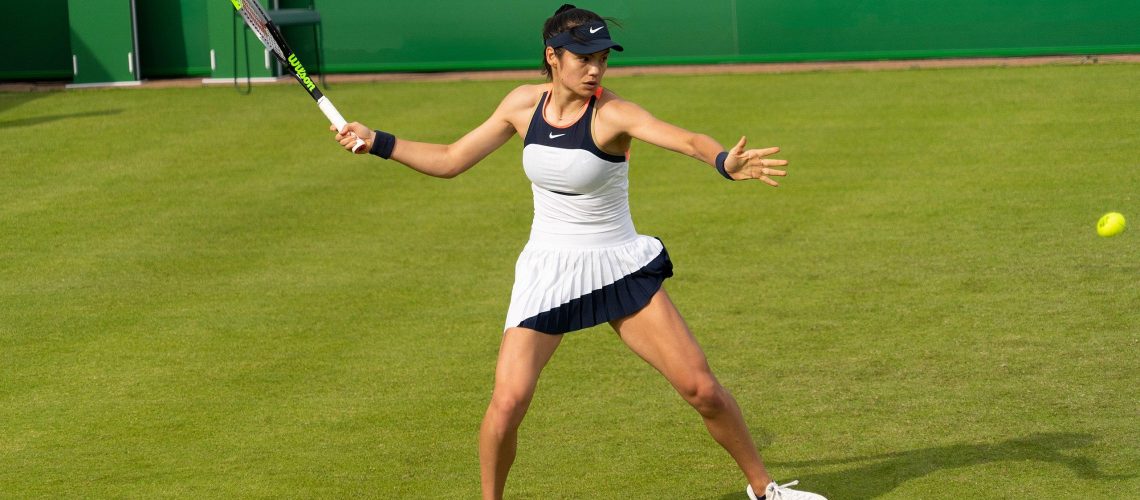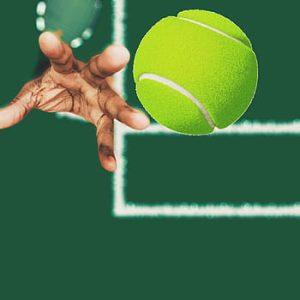We may earn money or products from the companies mentioned in this post.
Brief History of Tennis Shoes

Tennis shoes, also known as sneakers or athletic shoes, have a fascinating history that dates back to the 19th century These shoes were initially called “plimsolls” and were made of canvas with rubber soles They were designed to provide a lightweight and flexible option for sports activities
Evolution from Plimsolls to Modern Tennis Shoes
Over time, plimsolls evolved into what we now recognize as modern tennis shoes The development of vulcanized rubber in the late 19th century revolutionized the shoe industry This new material allowed for better traction and durability, making it ideal for sports footwear
In the early 20th century, companies like Converse and Keds introduced their versions of tennis shoes These brands incorporated innovations such as cushioning and arch support to enhance comfort during physical activities
Role of Sports and Fashion in Their Development
The popularity of sports like tennis played a significant role in the development of tennis shoes As athletes sought footwear that could improve their performance on the court, manufacturers began incorporating features specifically tailored for athletic pursuits
Additionally, fashion trends have influenced the design of tennis shoes throughout history From classic white leather styles to vibrant colors and bold patterns, tennis shoes have become a fashion statement both on and off the court
Importance of Tennis Shoes Today

Tennis shoes continue to play an essential role in today’s world for various reasons:
Performance Enhancement for Athletes
Athletes rely on specialized footwear to optimize their performance during competitive sports activities Tennis shoes are designed with features that provide stability, cushioning, and flexibility specific to the sport
The soles of tennis shoes often have a herringbone pattern, which offers excellent grip and traction on different court surfaces This feature allows athletes to move quickly and change directions with ease while minimizing the risk of slipping or sliding
Style Statement for Casual Wear
Beyond their functional benefits, tennis shoes have become a staple in casual fashion They effortlessly blend comfort and style, making them suitable for everyday wear
With countless designs available, ranging from retro classics to contemporary models, tennis shoes allow individuals to express their personal style Whether paired with jeans or a dress, these versatile footwear options add a touch of sporty flair to any outfit
In conclusion, the evolution of tennis shoes from plimsolls to modern athletic footwear showcases the fusion of sports performance and fashion trends Today, these shoes continue to provide athletes with enhanced performance capabilities while also serving as stylish choices for casual wear
Materials and Components used in Tennis Shoes

Tennis shoes are designed with various materials and components to provide the necessary support, comfort, and durability required for intense gameplay Let’s dive into the key elements that make up these essential athletic shoes
Upper Materials
The upper part of tennis shoes is responsible for securing the foot and providing stability during lateral movements on the court
-
Synthetic materials:
Synthetic materials like mesh and TPU are commonly used in tennis shoe uppers These materials offer advantages such as breathability, lightweight construction, and excellent durability However, compared to leather uppers, they may provide lesser support -
Natural materials:
Leather and suede are examples of natural materials used in tennis shoe uppers These materials offer better support and durability but tend to be heavier in weight and less breathable compared to synthetic alternatives
Midsole Materials and Technologies
The midsole plays a crucial role in providing cushioning, shock absorption, and stability during high-impact movements on the court
-
EVA (Ethylene-vinyl acetate):
EVA is a lightweight material commonly used in midsoles due to its excellent shock absorption capabilities It provides a comfortable cushioning experience for players However, EVA is less durable compared to other midsole materials -
PU (Polyurethane):
PU is another popular material used in midsoles It offers superior durability and stability but tends to be heavier than EVA constructions -
Gel Cushioning Systems:
Gel cushioning systems are often incorporated into tennis shoe midsoles to provide enhanced shock absorption and comfort, reducing the risk of injuries during intense gameplay
Outsole Materials and Patterns
The outsole is the bottom part of tennis shoes that comes into direct contact with the court surface It plays a crucial role in providing traction and durability
-
Rubber Compounds:
Tennis shoe outsoles are typically made from rubber compounds that offer optimal grip on different court surfaces -
Hard-court outsoles:
These outsoles are specifically designed for hard court surfaces They prioritize durability to withstand the abrasive nature of hard courts Additionally, they feature patterns like herringbone or similar designs to provide excellent traction -
Clay-court outsoles:
Clay-court outsoles focus on providing optimum traction on clay court surfaces They often employ full herringbone patterns or similar designs to prevent slipping during quick lateral movements -
Non-Marking Rubber Outsoles:
Many tennis shoes come with non-marking rubber outsoles to ensure they do not leave scuff marks or damage indoor court surfaces, making them suitable for various playing environments
In conclusion, understanding the materials and components used in tennis shoes is essential for players who want to make informed choices when selecting their footwear The combination of upper materials, midsole technologies, and outsole patterns contributes to the overall performance, comfort, and longevity of these athletic shoes Whether it’s synthetic or natural uppers, EVA or PU midsoles, or specialized rubber compounds in the outsoles – each component serves a purpose in enhancing a player’s experience on the tennis court
Tennis Shoe Manufacturing Process

Do you ever wonder how those sleek and stylish tennis shoes are made? Let’s take a closer look at the intricate process behind their creation From cutting the upper material pieces to quality control checks, each step contributes to producing a high-quality shoe that will keep you comfortable on the court
Preparation of Components
The first stage in the manufacturing process involves preparing all the necessary components This includes cutting the upper material pieces, which form the main body of the shoe Skilled craftsmen carefully measure and shape these materials to ensure a perfect fit for your feet
Next, midsoles are produced using molds These molds allow for consistent shaping and provide cushioning and support for your feet during intense rallies on the tennis court Simultaneously, outsoles are created using either vulcanization or injection molding techniques Vulcanization ensures durability and flexibility, while injection molding allows for greater precision in design
Assembling the Shoe
Once all the components are ready, it’s time to assemble the shoe Skilled artisans stitch together the upper material pieces with meticulous attention to detail This stitching not only provides structural integrity but also adds an aesthetic appeal to your tennis shoes
In addition to stitching, other elements like tongues, eyelets, and laces are attached to complete the shoe’s design The tongue serves as a barrier between your foot and laces, ensuring comfort and preventing irritation during gameplay Eyelets secure the laces in place while adding style to your footwear
To achieve optimal performance, bonding is crucial The midsole is carefully adhered to the upper using strong adhesives that withstand intense movements on court surfaces This bond ensures stability without compromising comfort or flexibility
The final step in assembly involves fusing the outsole to the midsole assembly This process guarantees a secure and durable connection, allowing you to move swiftly and confidently during your tennis matches
Quality Control and Inspection
Before the shoes are ready for packaging, rigorous quality control checks take place Individual components undergo meticulous inspection to ensure they meet the highest standards of craftsmanship Any imperfections or inconsistencies are identified and addressed promptly
An assembly line inspection is also conducted to verify that each shoe has been constructed correctly This includes checking for proper alignment, stitching integrity, and overall appearance Only shoes that pass this detailed scrutiny proceed to the next stage
Finally, a series of comprehensive quality assurance checks are conducted before packaging These final inspections guarantee that every pair of tennis shoes leaving the manufacturing facility is in impeccable condition, ready to provide you with exceptional performance on the court
The tennis shoe manufacturing process is a blend of skilled craftsmanship, precision engineering, and stringent quality control measures From cutting the material pieces to assembling them into a finished product, every step ensures that you receive a top-notch pair of tennis shoes that will enhance your game and make you stand out in style
Tennis Shoe Brands and Their Unique Technologies

When it comes to tennis shoe brands, Adidas is a name that stands out Their commitment to innovative technologies has made them a favorite among athletes worldwide One of their standout features is the Boost cushioning technology, which provides unparalleled comfort and responsiveness on the court This technology utilizes thousands of tiny energy capsules to absorb impact and return it as propulsive energy, giving players an extra bounce in their step
In addition to the Boost cushioning, Adidas also incorporates Primeknit upper construction into their tennis shoes This seamless knit material hugs the foot like a second skin, providing a snug and supportive fit Not only does it enhance stability during quick movements on the court, but it also allows for maximum breathability, keeping your feet cool even during intense matches
Nike is another powerhouse in the world of tennis shoe brands Known for their cutting-edge designs and performance-enhancing technologies, Nike continues to push boundaries with each new release One of their standout features is the Air Zoom cushioning units found in many of their tennis shoes These units are strategically placed under the ball of the foot and heel to provide exceptional responsiveness and shock absorption
Another unique technology employed by Nike is their Flywire support system This innovative feature utilizes lightweight cables that wrap around the midfoot area, providing a secure lockdown fit without sacrificing flexibility or comfort The Flywire system ensures that your foot stays securely in place during lateral movements while maintaining natural freedom of movement
When it comes to ASICS tennis shoes, you can expect top-notch comfort and stability thanks to their impressive technologies ASICS incorporates Gel cushioning systems into many of their models, which effectively attenuate shock during impact and toe-off phases This not only reduces the risk of injury but also enhances overall comfort during long matches or training sessions
The Trusstic System is another standout technology utilized by ASIC This lightweight support system is located in the midfoot area and works to stabilize the foot during lateral movements It provides added torsional rigidity, reducing the risk of twisting and allowing players to move confidently on the court
New Balance, a brand known for its commitment to quality craftsmanship and performance-driven designs, also incorporates unique technologies into their tennis shoes One notable feature is their Fresh Foam cushioning technology, which delivers plush comfort and superior responsiveness The innovative foam material adapts to the shape of your foot, providing targeted support and impact absorption
In addition to cushioning, New Balance utilizes knit uppers in many of their tennis shoe models These knitted uppers offer exceptional breathability and flexibility while maintaining structural integrity This allows for maximum airflow, keeping your feet cool and dry even during intense matches or training sessions
Lastly, Wilson tennis shoes boast impressive technologies that cater specifically to the needs of tennis players Their R-DST+ cushioning system offers superior shock absorption, providing optimal comfort during quick movements on the court This technology helps reduce fatigue and allows you to perform at your best throughout extended matches
Wilson also incorporates Sensifeel upper construction into their tennis shoes This feature enhances overall fit and feel by providing a snug wrap around the foot The seamless design reduces irritation and friction while maintaining necessary support for agile movements on the court
Useful Links

On | Swiss Performance Running Shoes & Clothing | On
What Are the Different Types of Athletic Shoes?
Design in Running, Court, and Fitness Shoes
The history of sneakers: from commodity to cultural icon
The Difference Between Tennis Shoes & Sneakers
What You Do (and Don’t) Need in a Running Shoe
How Sports Shoes Have Evolved Over The Years
Sneakers Made in the USA: Full List [2023]
Best made in USA running and walking shoes
Athletic Shoes
What Are Tennis Shoes Made Of? (Uncover the Answer Here)
How to Make Your Own Running Shoes
Non Marking Shoes – Everything you need to know
9 Sustainable Running Shoes Made With Recycled …
Are Running Shoes Supposed to Be Tight?
Rykä Athletic Shoes | Made for Women
The History of the Running Shoe






